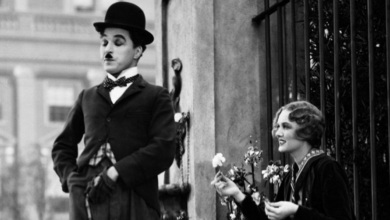The Evolution of Cinema: How Movies Have Changed Over the Decades – 17 Powerful Shifts Unveiled

Cinema has journeyed through a fascinating transformation over the past century. From grainy silent reels to immersive 3D blockbusters and streaming on mobile screens, The Evolution of Cinema: How Movies Have Changed Over the Decades is not just a story of technological advancement, but a cultural revolution. Let’s explore the milestones that have reshaped the film industry, narrative styles, audience expectations, and the very fabric of global storytelling.
The Birth of Cinema – Silent Films Era (1890s–1920s)
Invention of the Motion Picture Camera
The seeds of cinema were sown in the late 1800s when inventors like Thomas Edison and the Lumière Brothers pioneered motion picture cameras. Their innovations laid the groundwork for capturing moving images—a marvel that enchanted early audiences.
The Lumière Brothers and First Film Screenings
In 1895, the Lumière Brothers held the first public screening of short films, marking the official birth of cinema. Their documentaries and short stories mesmerized viewers and spread quickly across Europe and the U.S.
Iconic Silent Film Stars and Techniques
Legends like Charlie Chaplin, Buster Keaton, and Mary Pickford rose to fame without uttering a word. The era emphasized expressive body language, physical comedy, and title cards to convey emotion and narrative.
The Golden Age of Hollywood (1930s–1950s)
The Introduction of Sound – “Talkies”
In 1927, The Jazz Singer revolutionized the industry by synchronizing dialogue with film. This ushered in the age of “talkies,” reshaping acting, direction, and screenplay writing.
Technicolor and Visual Innovation
Technicolor brought films to life with vivid colors. Classics like The Wizard of Oz showcased this leap, dazzling audiences and redefining visual storytelling.
Studio System and Star Power
Major studios like MGM, Paramount, and Warner Bros. controlled everything—from script to screen. Iconic stars such as Humphrey Bogart and Katharine Hepburn became household names under long-term studio contracts.
The Rise of Television and Its Impact (1950s–1960s)
Shift in Audience Habits
The arrival of TV meant fewer cinema visits. Filmmakers responded with grand spectacles, widescreen formats, and epic narratives to lure audiences back to theaters.
Drive-In Theaters and Genre Diversification
Drive-ins flourished during this period, especially among teenagers. Simultaneously, genres like horror, sci-fi, and Westerns gained popularity, making cinema more diverse and adventurous.
New Hollywood and the Director’s Era (1970s–1980s)
Film School Directors and Auteur Theory
A new wave of filmmakers—Spielberg, Coppola, Scorsese—brought personal storytelling and cinematic flair to the mainstream. These auteurs blended commercial appeal with artistic integrity.
Blockbuster Films and Franchise Beginnings
Jaws (1975) and Star Wars (1977) introduced the concept of summer blockbusters. Sequels and merchandise turned films into long-term franchises, shaping marketing strategies for decades.
The Digital Revolution (1990s–2000s)
Emergence of CGI and Special Effects
Computer-generated imagery (CGI) became a game-changer. Films like Jurassic Park and The Matrix expanded creative boundaries, allowing filmmakers to visualize the impossible.
Independent Cinema and Global Influence
Studios like Miramax and Sundance Film Festival elevated indie films. Stories became more character-driven, while international cinema—from Japan, India, and Iran—found appreciative audiences worldwide.
Streaming Platforms and On-Demand Culture (2010s–Present)
Netflix, Amazon, and the Decline of Theaters
Streaming platforms have transformed how we consume content. Movies now release directly online, sometimes bypassing traditional cinema altogether, especially post-pandemic.
Binge-Watching Culture and Algorithm-Driven Content
Series and films are designed to keep audiences hooked. Data analytics help platforms recommend and even produce content tailored to user preferences.
Shifts in Storytelling Techniques
From Linear to Non-linear Narratives
Non-linear stories like Pulp Fiction and Memento broke traditional molds. Flashbacks, multiple timelines, and fragmented narratives became popular storytelling methods.
Rise of Character-Driven vs. Plot-Driven Stories
There’s a growing emphasis on deep character development over conventional plots. Films now explore psychological and emotional depth with nuanced storytelling.
Technological Innovations in Filmmaking
3D, IMAX, and VR Integration
Modern technology has created immersive experiences. 3D and IMAX elevate visual grandeur, while VR offers a peek into interactive storytelling.
Mobile Filmmaking and DIY Aesthetics
With smartphones and editing apps, anyone can be a filmmaker. This democratization has birthed grassroots movements and viral micro-cinema.
Representation and Diversity in Cinema
Inclusion of Marginalized Voices
Diversity is no longer optional. Films now showcase LGBTQ+ stories, people of color, and varied cultural perspectives—highlighting previously ignored narratives.
Gender, Race, and Cultural Narratives
Movements like #MeToo and #OscarsSoWhite have pushed Hollywood toward equitable representation. Inclusive storytelling is now both a social and commercial imperative.
Economic Models and Distribution Channels
From Box Office to Streaming Revenue
Traditional box office numbers now share space with streaming metrics. Subscription models, ads, and pay-per-view are reshaping profitability.
Film Festivals and Crowdfunding
Platforms like Kickstarter and festivals like Cannes and TIFF allow filmmakers to gain funding, exposure, and audiences beyond traditional avenues.
Audience Participation and Fan Culture
Social Media, Reviews, and Fan Theories
Fans today interact directly with creators. Online reviews, Twitter trends, and Reddit fan theories influence a film’s reception and reach.
Cosplay, Fandoms, and Conventions
From Comic-Con to global meetups, fan culture has created mini-industries around franchises, character tributes, and shared experiences.
Global Cinema – Beyond Hollywood
Bollywood, Nollywood, and K-Cinema
Indian, Nigerian, and Korean cinemas have built massive followings. Global hits like Parasite show that non-English films can conquer the Oscars and the box office.
Cross-Cultural Influences and Awards Recognition
Hollywood borrows from global cinema while inspiring it too. International co-productions and multilingual films bridge cultures and audiences.
Film Criticism and Scholarly Evolution
Online Reviews vs. Traditional Critique
YouTubers and bloggers rival traditional critics. Rotten Tomatoes and IMDb scores can make or break a movie’s success overnight.
Film Studies in Academia
Film is no longer just entertainment; it’s a subject of academic study. Universities offer degrees in film theory, history, and production.
Future of Cinema – Trends and Predictions
AI in Scriptwriting and Editing
AI tools now assist in screenplay generation and video editing. While still in early stages, they may soon become co-creators.
Interactive Films and Audience Control
Viewers are gaining control. Films like Black Mirror: Bandersnatch allow audiences to make choices, blending gaming with cinema.
FAQs – The Evolution of Cinema: How Movies Have Changed Over the Decades
Why has cinema evolved so dramatically?
Cinema evolves due to shifts in technology, culture, economics, and audience preferences. Each decade brings new innovations and storytelling challenges.
What were the biggest turning points in film history?
Key moments include the invention of sound, color, CGI, and the rise of streaming platforms. Each has dramatically reshaped the industry.
How has technology changed filmmaking?
From hand-cranked cameras to AI editing, technology has streamlined production, expanded creativity, and democratized access to filmmaking tools.
What role has streaming played in recent years?
Streaming has altered distribution, reduced theatrical dependence, and changed how films are funded, made, and watched.
Are movie theaters dying?
Not dying, but evolving. Theaters are focusing on immersive experiences (like IMAX and 4DX) to compete with home streaming.
What is the future of global cinema?
It’s collaborative, inclusive, and borderless. Expect more international co-productions, diverse voices, and technologically enhanced experiences.
Conclusion: Celebrating a Century of Cinematic Transformation
From flickering silent screens to virtual reality spectacles, The Evolution of Cinema: How Movies Have Changed Over the Decades is a testament to creativity, innovation, and cultural relevance. Movies have mirrored our hopes, fears, and dreams—transforming not just how we watch, but how we understand the world. As we look ahead, one thing is certain: cinema’s journey is far from over.


